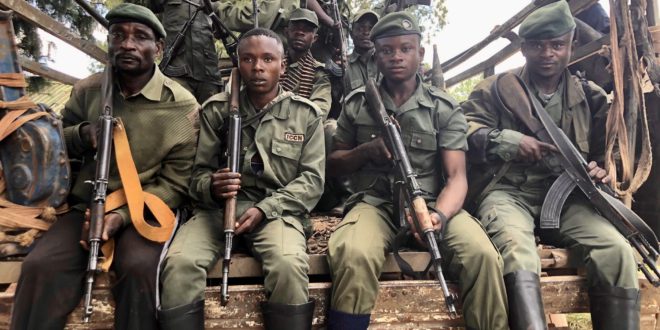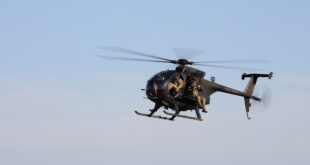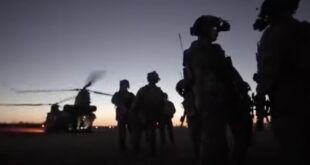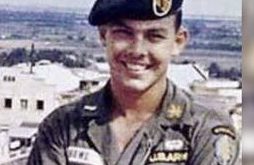A conversation with badass conservationist Tina Lain.
by Heath Hansen
Christine (Tina) Lain works at the Upemba National Park located in the Democratic Republic of the Congo. These are some of the most dangerous places on earth for conservation; in one area alone, more than 200 Rangers have been killed in attacks going back more than a decade. Born in Zambia, and raised in South America, Europe, and Africa, Tina currently oversees the management of the park, including the training and deployment of the Rangers within the more than 5,200 square miles it encompasses. When she had some down time, Soldier of Fortune caught up with Tina three years ago, and asked what it was like being a conservationist and sometime paramilitary in the Congo.
So Tina, how long have you worked in the Congo, at Upemba National Park?
I started working in the Congo in 2005; at this time I was not working in conservation but in peace building and emergency aid with a Dutch NGO. I started working in conservation with the Dutch committee of IUCN in 2008, mostly in and around Virunga National Park in Eastern DRC, with local civil society and communities. In 2016, I got involved with Upemba National Park when one of the sector wardens of Virunga was relocated there with no support whatsoever. That’s when I started looking for funding to help him protect the last remaining elephant population in the Katanga region and to sustain the Rangers during patrol.
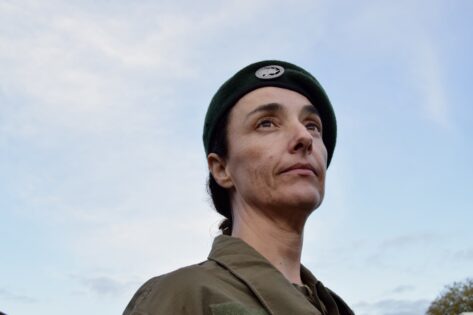
How long have you been working in a paramilitary role in Africa?
I never worked directly in a paramilitary role until recently. However, for more than ten years, I have been collaborating closely with Rangers in Virunga and Upemba National Park. I have had the opportunity to see, up close and personal, the work and challenges that rangers face and how they relate to the surrounding communities. These are some of the most dangerous places on earth for conservation; in Virunga, more than 200 Rangers have been killed in attacks going back more than a decade.
Working in Africa, at a national park, can be very dangerous. What are the types of hazards you and the Rangers face on a daily basis?
Yes, working in conservation in DRC is not easy. We don’t have all the needed equipment and training to do our job properly and safely. Some say it is like “Rangers are doing an incredibly dangerous job with one hand tied behind their backs, putting their lives and the wildlife at even greater risk.” Unfortunately, many protected areas in DRC are the refuge of militia groups (like the Mai Mai), some are better armed than others, but when you go on patrols in some areas of the park you never know what you will encounter.
Most of the hazards we encounter are related to our challenging working conditions, inadequate transportation and poor communications. If our Rangers get injured in an ambush or an accident we will have a real difficult time evacuating them, putting more lives at risk.
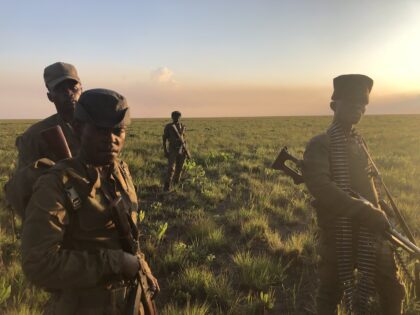
You mentioned more than 200 Rangers have been killed in the past decade. Have any Rangers been killed recently?
We lost one Ranger in an ambush by militia men and three others were wounded; in April this year our park HQ was attacked and one of our Rangers was also wounded; he miraculously survived this attack after taking a round from an AK-47.
No less than two weeks ago, another Ranger from our neighboring park Kundelungu was imprisoned and tortured by two armed rebels. Luckily he was able to regain control of his weapon and shot one of his captors and saved his life. So no, unfortunately, I can’t say that this is a rare occurrence, but compared to other parks like Virunga, we are lucky.
What types of weapons do the Rangers carry to defend themselves, and Upemba National Park?
Most of our Rangers carry an AK-47, but not all of them have one, as we are short on numbers. We also have a few PKM’s and RPG’s. Luckily, after the last attack at our headquarters, we were able to get new ammunition from the Ministry of Defense. This was a huge relief for our Rangers as they were worried we’d be attacked and we had no means to fight enemy attacks.
What types of wildlife live within the Park’s borders?
Upemba harbors the last remaining population of Elephants in Katanga; in the past they numbered more than 100,000, nowadays there are around 200, but that number is increasing thanks to the renewed efforts of the rangers. We have hyenas, leopards, jackals, pangolins, as well as the only population of zebras in the wild in DRC; we believe lions may still be present, but we are currently unable to conclusively document their existence. Antelopes are increasing in numbers; we also have many different species of birds including the charismatic Shoebill stork, and a great variety of fish in the Lufira river. The last black rhino in Upemba was killed in the 1950’s.
Which animals are regularly targeted by the Mai Mai militiamen for illegal poaching?
Monkeys, pangolins and antelopes are the species most targeted for bushmeat and are often killed for local consumption. The pangolins are also targeted for the Chinese expatriates working in many of the mines of the region.
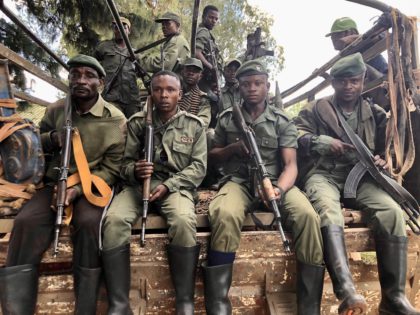
What other types of illegal activities do the Mai Mai carry out at Upemba?
Another criminal activity regularly carried out in Upemba is illegal mining. Gold mining is a common activity as well as coltan, cobalt and many others. Upemba is probably in one of the most mineral rich areas of DRC. This brings a lot of challenges, not only in terms of possible social and environmental impacts of the illegal exploitation, but also in terms of security, as many of these illegal mines are held by armed militia and too often protected by the DRC army (FARDC).
You were recently promoted to manager at the Park. Is there anything you will try to change with your new leadership position?
Yes, I’m probably one of the few women at the head of a national park in Central Africa. What I really want to change in my new leadership position is how communities perceive Rangers and how Rangers perceive communities. For too long there has been a separation between Rangers and communities; both looking at the other as the enemy.
If one thing is for sure, it is that without the support of communities we will never be able to protect the park, nor keep our Rangers safe. We need each other and ought to rebuild trust and confidence in the institution, in the wildlife authority and in the rule of law. One focus will be to build a strong Upemba team, where men and women are all equals, no matter their background, and feel like a part of something bigger than themselves.
Where does your passion come from? What drives you?
Difficult to answer. I guess my passion or drive comes from the people I meet, from the Rangers that are in the field, on the frontline, from the surrounding communities. All of them are the first victims, of poverty, violence, conflict, but they will be the last that you hear complain; they endure and keep going, often with a smile and never giving up. They are pushed to extremes but are still standing; it’s not always easy and sometimes things happen, but they are there, in the present, and keeping parks alive despite all odds. We owe much to them. I feel privileged to work with, and for, them and for the protection of our natural world.
What are your views on using guns and ammunition to solve problems?
I believe that guns and ammunition are the last possible solution to problems; that most problems don’t get solved with a gun but with people listening to and understanding each other (even if they don’t agree) and finding the real nature of problems, looking for the motivations that drive their actions and working on that. I believe that a doses of humility, solidarity, and caring can do wonders. Trying to find real solutions often takes more courage and perseverance than pulling a trigger.
Follow Tina Lain on Twitter, @LainTina.
Heath Hansen is Paramilitary Correspondent at Soldier of Fortune.
 Soldier of Fortune Magazine The Journal of Professional Adventurers
Soldier of Fortune Magazine The Journal of Professional Adventurers


